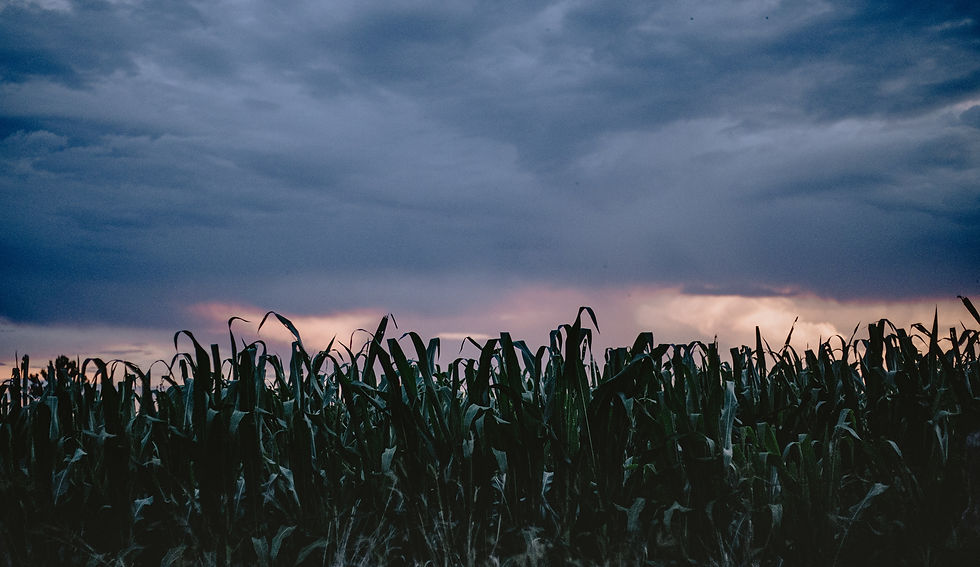Ancient Mayan Foods and Methods of Agriculture: A Lesson in Sustainability and Living
- Nahku Tulum

- Oct 6, 2023
- 3 min read
Keywords: Mayan cuisine, sustainable agriculture, ancient farming techniques, culinary heritage
Tulum, a picturesque coastal town on Mexico's Yucatan Peninsula, is not only known for its stunning beaches and Mayan ruins but also for its rich culinary heritage rooted in ancient Mayan foods and sustainable agricultural practices. In this blog post, we'll take a journey back in time to explore the fascinating world of Mayan cuisine, agriculture, and how these traditions continue to inspire sustainable living today.
The Foundation of Mayan Agriculture The Mayans, an ancient Mesoamerican civilization that thrived for centuries, were ingenious agriculturalists. Their ability to cultivate crops in the challenging terrain of the Yucatan Peninsula is a testament to their deep understanding of the land and its resources. One of the most remarkable features of Mayan agriculture was their use of a system known as "milpa." This sustainable farming technique involved cultivating a variety of crops, including maize (corn), beans, squash, and chili peppers, in the same field. The maize provided a natural trellis for the beans, while the squash's broad leaves shaded the soil, reducing evaporation and preventing weeds.

Maize: The Sacred Staple Keywords: Maize cultivation, staple food, cultural significance Maize, or corn, held profound cultural and culinary significance for the Mayans. It was considered a sacred crop, symbolizing life and sustenance. The Mayans developed over 30 different varieties of maize, each adapted to specific growing conditions. Maize formed the foundation of the Mayan diet and was used to make various foods, including tortillas, tamales, and atole (a thick maize-based beverage). The Mayans also discovered the process of nixtamalization, where maize was treated with lime to improve its nutritional value. This method is still used in traditional Mexican cuisine today.
Beyond Maize: Diverse Ingredients While maize was a staple, the Mayan diet was diverse and included an array of ingredients gathered from the land and waters. Beans, rich in protein, complemented the maize-based dishes. Squash and chili peppers added flavor and variety. The Yucatan Peninsula's coastal location provided access to an abundance of seafood, including fish and shellfish, which were incorporated into Mayan cuisine. Local herbs and spices, such as achiote and epazote, added depth and complexity to their dishes.

Sustainable Living in Harmony with Nature Keywords: Sustainability, traditional farming, eco-conscious living The Mayan agricultural practices of milpa and terracing were inherently sustainable. By cultivating a variety of crops together, they reduced the risk of soil depletion and promoted biodiversity. Terracing, which involved building raised fields on hilly terrain, helped manage water runoff and erosion. These methods not only sustained the Mayan civilization but also protected the fragile ecosystems of the Yucatan Peninsula. They were living in harmony with nature, a lesson in sustainable living that continues to resonate today.
Mayan Culinary Heritage in Tulum In Tulum, the Mayan culinary heritage lives on. Local restaurants and eateries pay homage to these ancient traditions by incorporating traditional ingredients and techniques into their menus. Visitors can savor dishes like cochinita pibil (slow-roasted pork), prepared using methods passed down through generations, or indulge in fresh ceviche made with locally caught seafood.
Sustainability in Tulum Keywords: Sustainable tourism, eco-friendly practices, conservation efforts Tulum's commitment to sustainability extends beyond its cuisine. The town is known for its eco-conscious approach to tourism. Many accommodations, like Nahku, embrace sustainable practices, such as solar power and waste reduction, to minimize their impact on the environment. The preservation of natural wonders like the Tulum coral reefs and the Sian Ka'an Biosphere Reserve is a testament to the town's dedication to responsible tourism. Visitors can engage in eco-tours, birdwatching, and snorkeling, contributing to the conservation efforts that protect these delicate ecosystems.
Embracing the Mayan Legacy
Tulum's ancient Mayan foods and agricultural practices offer more than just a glimpse into the past. They provide valuable lessons in sustainable living, emphasizing the importance of working in harmony with nature. As you savor the flavors of Mayan cuisine in Tulum and explore the region's eco-conscious initiatives, you become part of a legacy that bridges ancient traditions with a commitment to a more sustainable future.




Comments